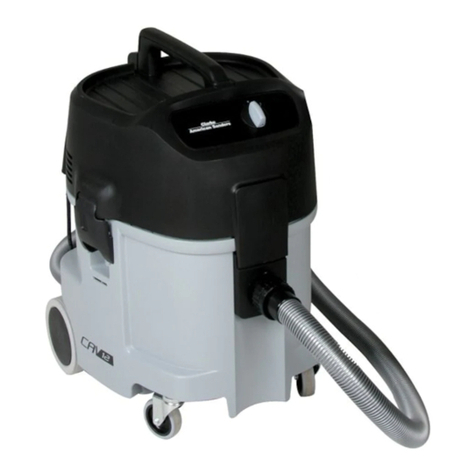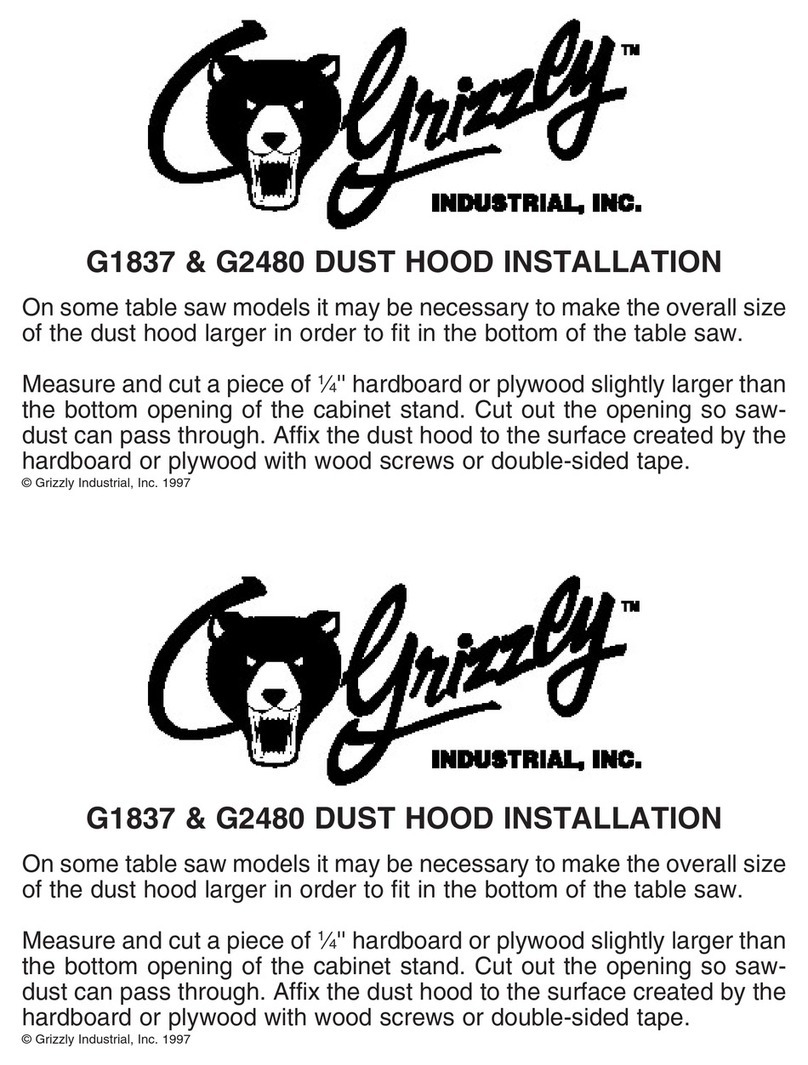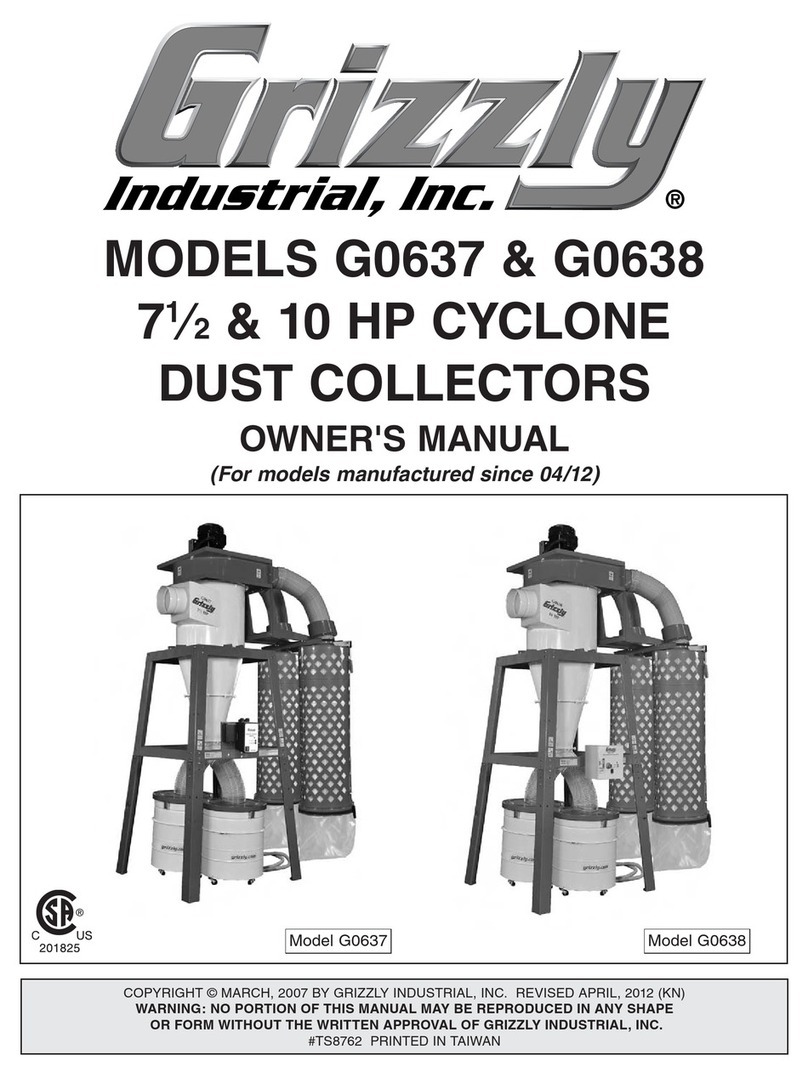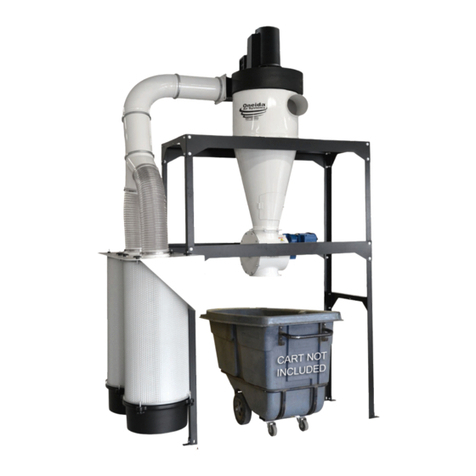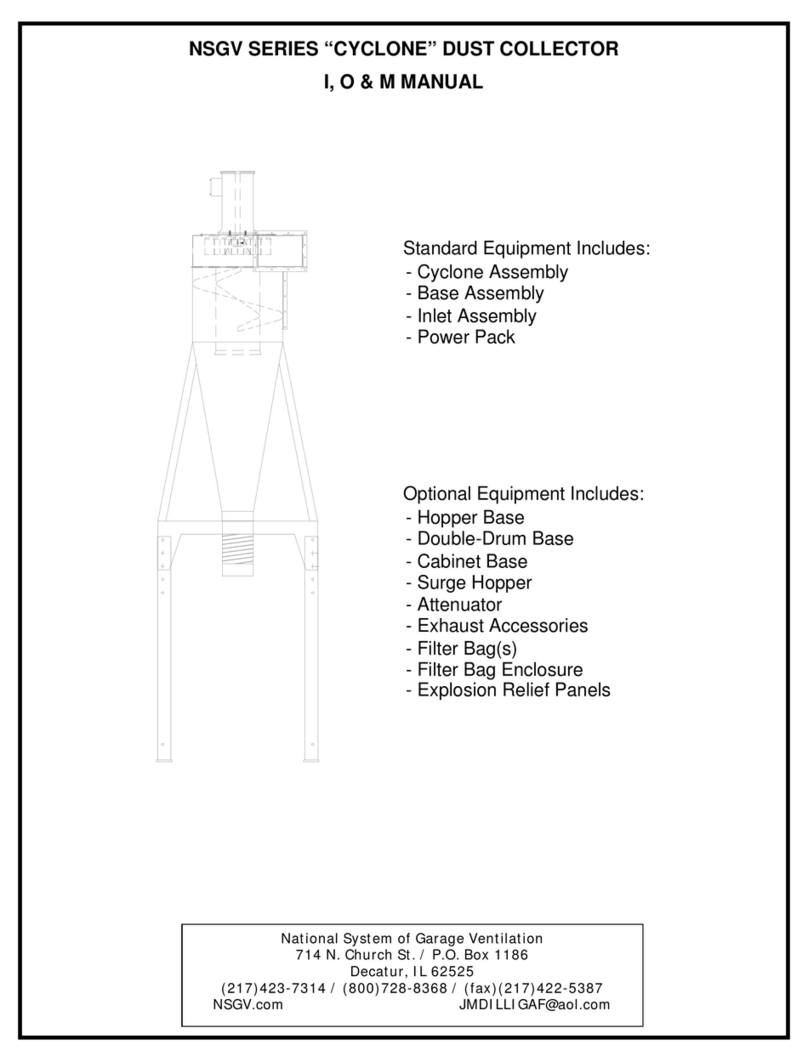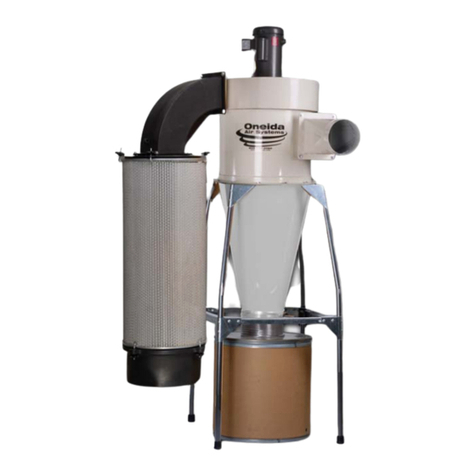Pfeiffer Vacuum SAS 16 User manual

PD 0031 BEN/E(1701)
OPERATING INSTRUCTIONS EN
Translation of the original instructions
SAS 16/25/40/63/100/160
Dust Separator

2
Contents
Please note:
Current operating instructions are also available via
www.pfeiffer-vacuum.net.
1. Important for your safety ................ 3
1.1. Orientation.......................................................... 3
1.2. Pictogram definitions.......................................... 3
2. Getting to know the dust separator 4
2.1. Main characteristics............................................ 4
Authorized use .......................................................... 5
Unauthorized use ...................................................... 5
2.2. Versions.............................................................. 5
3. Installation........................................ 5
4. Operation.......................................... 6
4.1. General notes ..................................................... 6
5. Maintenance..................................... 6
5.1. Opening the filter housing.................................. 6
5.2. Replacing the filter inserts.................................. 6
5.3. Cleaning the filter inserts.................................... 7
5.4. Installing the filter inserts ................................... 7
6. Service .............................................. 8
7. Technical data .................................. 8
7.1. Dimension diagrams........................................... 9
8. Spare parts ..................................... 12

3
1. Important for your safety
☞Please read and follow all instructions in this manual.
☞Please become familiar with:
– Dangers arising from the unit;
– Dangers arising from your equipment;
☞Please observe all safety instructions and accident
prevention instructions.
☞Regularly monitor for proper observance of all protection
measures.
☞Do not make any unauthorized conversions to the unit on
your own.
☞Please observe our shipping instructions in the Service
section when sending in the unit.
Risk of damaging the unit or the equipment.
CAUTION
Dust contamination!
Wear appropriate protective mask.
DANGER
Risk of physical injury.
WARNING
Important information regarding the product,
handling of the product or a part of the
documentation requiring special attention.
☞
PLEASE NOTE
Subject to change.
1.1. Orientation
Instructions in the text
➡Work instructions: This indicates an action that must be
taken!
Symbols used
The following symbols are used consistently in all figures:
Gas outlet side of the dust separator (aligned to the
vacuum flange of the vacuum pump)
Item number
Same units and accessories have the same item numbers in
all figures.
1.2. Pictogram definitions

4
2. Getting to know the dust separator
2.1 Main characteristics
The SAS dust separators are installed in the intake line of
vacuum pumps to prevent large dust particles from entering
the pump. This increases the service life of the pump and the
operating fluid.
The SAS are designed for volume flow rates in the range of
5 … 1000 m3/h depending on the type. The separable particle
size for the possible filter inserts is 5 μm.
Condensable vapors cannot be vacuumed via the SAS.
Dust separator SAS 16/25
1 Gas inlet
2 Gas outlet
3 Filter cover
4 Filter housing
Dust separator SAS 40
1 Gas inlet
2 Gas outlet
3 Filter cover
4 Filter housing
2
3
1
2
44
3
1
Dust separator SAS 160
1 Gas inlet
2 Gas outlet
3 Filter cover
4 Filter housing
2
3
1
4

5
2.2. Versions
SSAASSTTyyppeeCCoonnnneeccttiioonnffllaannggeeVVoolluummeefflloowwrraatteeAArrttiicclleeNNoo..AArrttiicclleeNNoo..RReeppllaacceemmeennttffiilltteerr
Authorized use:
– The dust separator may be used only in the vacuum
domain.
– The dust separator should be installed in a vertical or hori-
zontal position according to the permissible installation
positions.
– Do not vacuum condensable vapors.
– Do not pump corrosive or explosive gases.
– Do not use the dust separators in areas with risk of
explosion.
– Any accessories not mentioned in this manual cannot be
used without approval from Pfeiffer Vacuum.
Unauthorized use
The following applies as unauthorized use:
– Use for purposes deviating from those mentioned above,
especially:
– connection to pumps and devices not designated for such
use according to their operating manuals.
Unauthorized use voids all liability and guarantee claims.
The SAS dust separator series comprise single-stage
dust filters with inserted filter elements made of polyester.
The SAS connection flanges are fitted with ISO flanges.
All filters are equipped with one filter insert apiece.
3. Installation
The maximum allowable gas inlet temperature
for the SAS is 104 °C. Temperatures above the
limit
can lead to damages to the elements, filter
media and seals.
The direction of flow inside the SAS is from the outside of the
Filter housing to the inside.
➡Make sure that the connections to the piping system are
sealed sufficiently to prevent unnecessary leakage.
➡Install the SAS in a vertical or in a horizontal position in
accordance with the illustration.
CAUTION
Permissible installation position
2 Gas outlet
2
90°
90°
max
SAS 16 DN 16 ISO-KF 12 m3/h PK Z60 506 PK E57 009 -T
SAS 25 DN 25 ISO-KF 42 m 3/h PK Z60 508 PK E57 010 -T
SAS 40 DN 40 ISO-KF 120 m 3/h PK Z60 510 PK E57 013 -T
SAS 63 DN 63 ISO-K 360 m 3/h PK Z60 511 PK E57 011 -T
SAS 100 DN 100 ISO-K 760 m 3/h PK Z60 512 PK E57 012 -T
SAS 160 DN 160 ISO-K 1920 m 3/h PK Z60 514 PK E57 016 -T

6
Dust separator SAS 100
5 Filter insert
6 Wing nut
Dust separator SAS 16, SAS 25, SAS 40, SAS 63
3 Filter cover
5 Filter insert
7 O-Ring
8 Profile seal:
(SAS 16 and SAS 40 two, one at the bottom and one in the filter
cover)
5
8
37
56
5. Maintenance
Maintenance of the SAS dust separator
extends to cleaning or replacing the filter
insert.
The pollution degree of the filter can be
determined by reduction in pump performance,
e. g. when the operating pressure is not
reached within the expected time.
5.1. Opening the filter housing
➡Switch off and vent vacuum pump.
➡Remove SAS from the vacuum flange of the pump.
➡Loosen the locking clips (wire holder); unscrew wing nuts
at SAS 160.
➡Remove the housing cover.
☞
PLEASE NOTE
4. Operation
4.1. General notes
It is important to check the differential pressure regularly to
ensure that the dust separator work properly. Always make
note of the starting pressure loss in a clean state. Clean the
filter insert when the starting value is exceeded by 25 to 35
mbar.
Always check the status of the filter insert and
housing seals. The insert seals always must be
level on the end caps and sealed well.
☞
PLEASE NOTE
➡Every time you change the filter insert, check the inlet,
outlet, purifying area and sealing surfaces for impurities.
➡Immediately remove dirt and other particles.
➡Operate the dust separator only when a proper seal is
guaranteed.
5.2. Replacing the filter inserts
➡Some inserts (SAS 63, SAS 100, SAS 160) are fastened
additionally with a separate wing nut or fastening nut 6
and washer, which must be removed.
➡Lift filter insert and remove it from the filter housing.
➡Clean the housing surfaces, the sealing surfaces and the
end caps of the inserts to prevent dirt from entering the
clean area.

7
Polyester insert:
Wear a protective mask.
➡Clean the polyester insert in lukewarm water with
mild detergent.
➡Vacuum or blow a gentle stream of air through the insert.
➡Dry the insert before installing it.
Use a new filter insert if you cannot ensure that
the filter insert is still flawlessly functional after
the cleaning process. Request seals as needed.
☞
PLEASE NOTE
DANGER
5.4. Installing the filter insert
➡Ensure that all surfaces are free of impurities.
➡Carefully place the cleaned or new insert in the correct
position on the base plate of the filter housing.
➡Ensure that the filter insert is positioned correctly and
that there is no dirt between the sealing surfaces.
➡Attach washer and screw in the wing nut 6,if existing, by
hand.
➡Correctly position the O-Ring on the housing cover if
it is not fixed in position on the cover.
➡Place the cover on the open side of the housing; make
sure to center the filter insert and place it level on the
sealing surface.
➡Press the housing cover down and simultaneously
engage and lock the locking clips (wire holder) on the
housing cover. At SAS 160 evenly screw down wing nuts.
5.3. Cleaning the filter inserts
Take special care during the cleaning process,
since the filter inserts can be damaged during
dismantling, cleaning or assembly. Damaged
filter inserts can allow unfiltered particles to
enter into the pump, which could lead to further
damage.
CAUTION
Staubabscheider SAS 160
3 Filter cover
5 Filterinsert
6 Wing nut
7 Gasket
8 O-Ring
8
6
7
5

8
6. Service
7. Technical Data
TTeecchhnniiccaallddaattaaSSAASS1166SSAASS2255SSAASS4400SSAASS6633SSAASS110000SSAASS116600
Gas inlet connection DN 16 ISO-KF DN 25 ISO-KF DN 40 ISO-KF DN 63 ISO-K DN 100 ISO-K DN 160 ISO-K
Gas outlet connection DN 16 ISO-KF DN 25 ISO-KF DN 40 ISO-KF DN 63 ISO-K DN 100 ISO-K DN 160 ISO-K
Conductance value with polyester
1 mbar l/s 16 150 380 2500 2000 -
100 mbar l/s 33 750 2250 20.000 30.000 -
Leak rate mbarl/s < 1• 10-4 < 1• 10-4 < 1•10-4 < 1• 10-4 < 1•10-4 < 1• 10-4
Separable particle size μm 5 5 5 5 5 5
Degree of separation for grain
size limit % 99,7 99,7 99,7 99,7 99,7 99,7
Temperature range °C -26 ... + 104 -26 ... + 104 -26 ... + 104 -26 ... + 104 -26 ... + 104 -26 ... + 104
Working pressure, allowable (abs.) bar 1,0 1,0 1,0 1,0 1,0 1,0
Weight kg 0,12 1,1 2,1 5,9 12,8 50
Do Make Use Of Our Service Facilities
In the event that repairs are necessary to your unit, a number
of options are available to you to ensure any system down
time is kept to a minimum:
– Return the individual components to the manufacturer for
repairs;
– Replace individual components with a new value
exchange units.
Local Pfeiffer Vacuum representatives can provide full
details.
Before Returning:
➡When returning the unit please use original factory
packing.
➡Dismantle all accessories.
➡Clean the unit.
➡If the unit is free of harmful substances, please attach a
clearly visible notice: “Free of contamination” (to the unit
being returned, the delivery note and accompanying
paperwork).
Harmful substances" are substances and preparations as
defined in current legislation. Pfeiffer Vacuum will carry out
the decontamination and invoice this work to you if you have
not attached this note. This also applies where the operator
does not have the facilities to carry out the decontamination
work. Units which are contaminated microbiologically, explo-
sively or radioactively cannot be accepted as a matter of
principle.
Fill out the service request and the declaration on
contamination
➡Download the forms “Service Request” and “Declaration
on Contamination”.1)
➡Fill out the “Service Request” form and send it by fax or
e-mail to your Pfeiffer Vacuum service address.
➡Include the confirmation on the service request from Pfeif-
fer Vacuum with your shipment.
➡Fill out the contamination declaration and enclose it in the
shipment (required!).
Please get in touch with your local Pfeiffer Vacuum represen-
tatives if there are any questions regarding contamination.
Decontaminate units before returning or
possible disposal. Do not return any units which
are microbiologically, explosively or radio-
actively contaminated.
Returning Contaminated Units
If contaminated units have to be returned for
maintenance/repair, the following instructions concerning
shipping must be followed without fail:
➡Neutralise the unit by flushing with nitrogen or dry air.
➡Seal all openings to the air.
➡Seal unit in suitable protective foil.
➡Ship the unit only in suitable packaging.
Repair orders are carried out according to our
general conditions of sale and supply.
➡If repairs are necessary, please send the unit together
with a short damage description to your nearest Pfeiffer
Vacuum Service Center.
☞
PLEASE NOTE
WARNING
1) Forms under www.pfeiffer-vacuum.net

9
7.1. Dimension diagrams
58
66
99
4
96
88
18
2
2
DN 16 ISO-KF
DN 16 ISO-KF
SAS 16
70
86
111
9
146
128
22
22
DN 25 ISO-KF
DN 25 ISO-KF
SAS 25
117
127
187
182
5
171
32
32
DN 40 ISO-KF
DN 40 ISO-KF
SAS 40

10
DN ISO 63-K
DN ISO 63-K
6,5
±
6,5
±
6,5
±
222
165
6,5
±
293
6,5
±
51
6,5
±
155
195
∅
∅
SAS 63
DN 100 ISO-K
DN 100 ISO-K
Ø
Ø
3
±
337
3
±
305
3
±
232
3
±
235
3
±
412
3
±
74
SAS 100
7.1. Dimension diagrams

11
7.1. Dimension diagrams
734
702
103
69
521
6,5
365
14
412
287 ± 6,5
51
305
470Ø
Ø
±
6,5
±
6,5
±
SAS 160

12
Art. No. Filter Type Set of Seals Maintenance Set Polyester
(consisting of pos. 7 and 8) (consisting of pos. 5)
PK Z60 506 SAS 16 PK E57 001 -T PK E57 009 -T
PK Z60 508 SAS 25 PK E57 002 -T PK E57 010 -T
PK Z60 510 SAS 40 PK E57 014 -T PK E57 013 -T
PK Z60 511 SAS 63 PK E57 003 -T PK E57 011 -T
PK Z60 512 SAS 100 PK E57 004 -T PK E57 012 -T
PK Z60 514 SAS 160 PK E57 015 -T PK E57 016 -T
8. Spare parts

13

VACUUM SOLUTIONS FROM A SINGLE SOURCE
Pfeiffer Vacuum stands for innovative and custom vacuum solutions worldwide,
technological perfection, competent advice and reliable service.
COMPLETE RANGE OF PRODUCTS
From a single component to complex systems:
We are the only supplier of vacuum technology that provides a complete product portfolio.
COMPETENCE IN THEORY AND PRACTICE
Benefit from our know-how and our portfolio of training opportunities!
We support you with your plant layout and provide first-class on-site service worldwide.
Are you looking for a
perfect vacuum solution?
Please contact us:
Pfeiffer Vacuum GmbH
Headquarters • Germany
T +49 6441 802-0
www.pfeiffer-vacuum.com
Other manuals for SAS 16
1
This manual suits for next models
5
Table of contents
Popular Dust Collector manuals by other brands
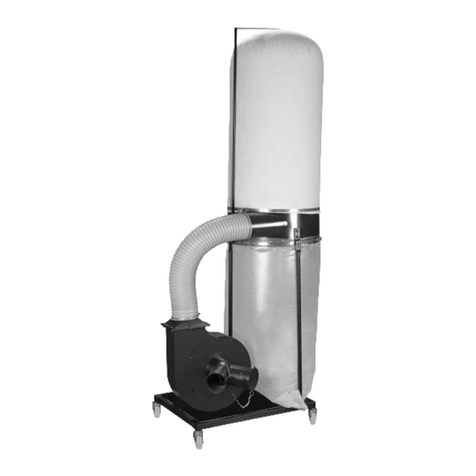
Central Machinery
Central Machinery 61790 Owner's manual & safety instructions
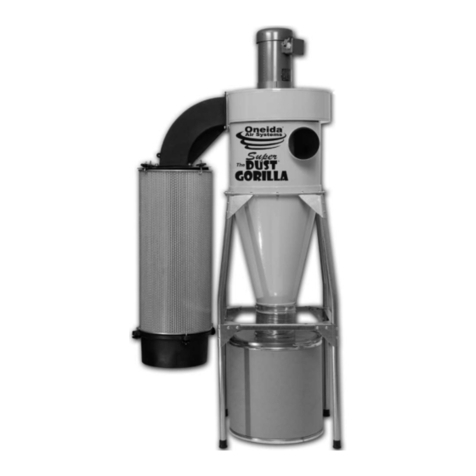
Oneida Air Systems
Oneida Air Systems Super Dust Gorilla 2hp owner's manual
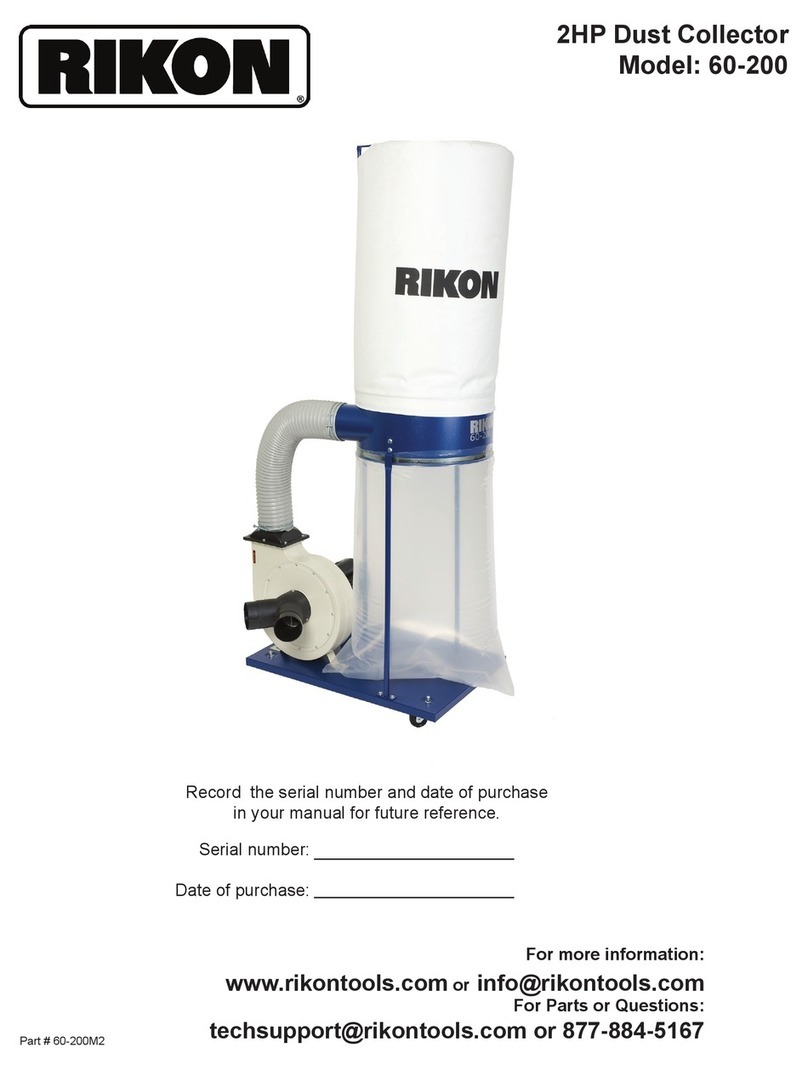
Rikon Power Tools
Rikon Power Tools 60-200 instructions

National Flooring Equipment
National Flooring Equipment DL2000 Service manual
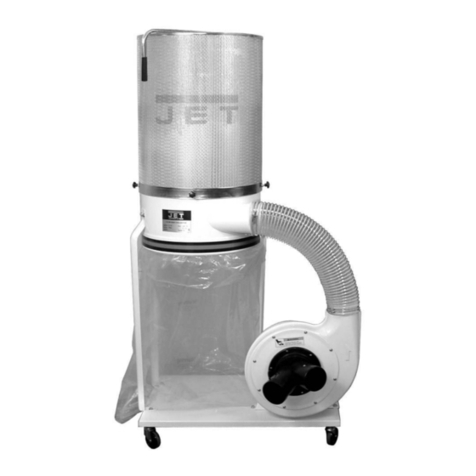
Jet
Jet DC-1200CK Operating instructions and parts manual
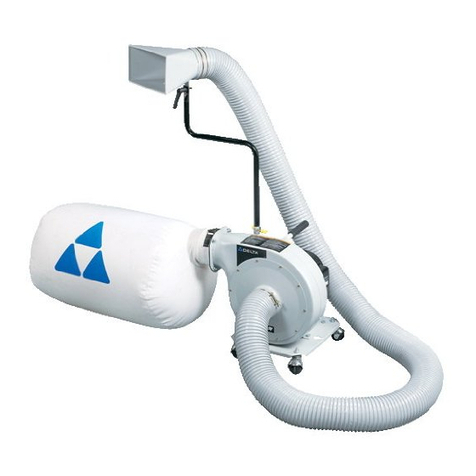
Delta
Delta AP-300 instruction manual
